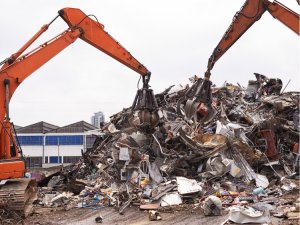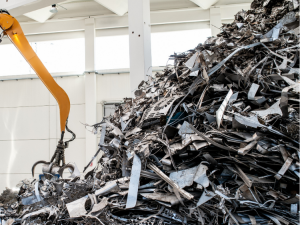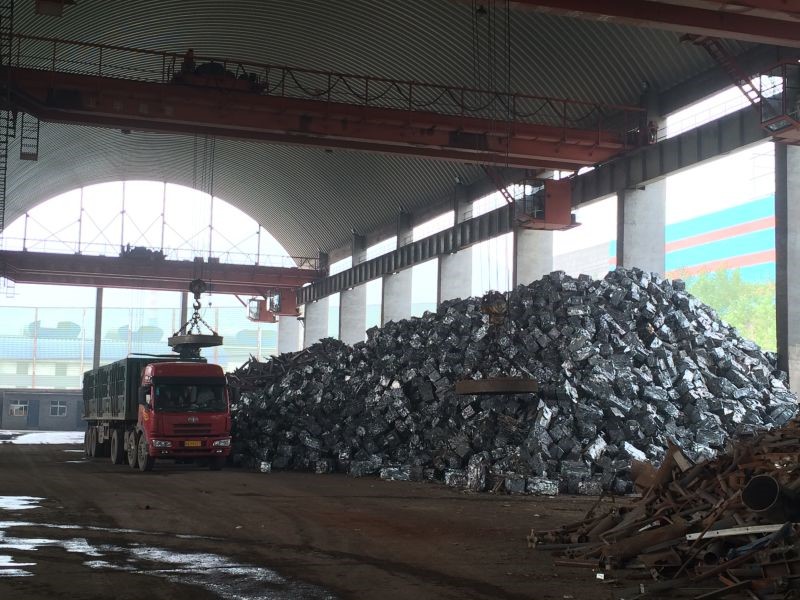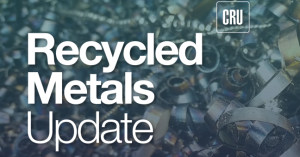
US scrap tags drop in April as tariff fog continues
US scrap prices declined in April for all the grades tracked by SMU amid tariff uncertainty, according to market sources.

US scrap prices declined in April for all the grades tracked by SMU amid tariff uncertainty, according to market sources.

The HRC vs. prime scrap spread increased again in March.

Ferrous scrap prices rose across the board in March as the market adapted to short supply and the volatile tariff situation, sources told SMU.

In the final week of February, SMU polled steel and scrap executives to gather their insights on the current state of the scrap market as well as future projections.

The price spread between hot-rolled coil (HRC) and prime scrap widened in February ahead of the implementation of President Trump’s tariffs on steel.

The February scrap market has settled higher on all grades SMU covers.

A comparison of the current cost of pig iron vs. busheling scrap.

The US scrap market sentiment has become more bullish over the last week. Many districts are telling SMU that the potential rise in prices will exceed the earlier estimate of $20 per gross ton (gt). Several sources have pegged the February market as up $30-50/gt. Here are several regional viewpoints from the trade: In the […]
The price spread between hot-rolled coil (HRC) and prime scrap continued to narrow in January, according to SMU’s most recent pricing data. While SMU’s average HRC price edged down week over week (w/w), it rose compared to a month ago. The January price for busheling also increased from December. Our average HRC price as of […]
US scrap tags rose for all the grades tracked by SMU in January in what was deemed a "restocking rally," sources said. The January market was up ~$20 per gross ton (gt) across the board. This did not include turnings, which were up $30/gt.

The ferrous scrap market at the start of the new year came into focus late yesterday, with overall prices seen rising from December.

The US domestic ferrous scrap market had a rough 2024, despite optimism as the year started.

The price spread between hot-rolled coil (HRC) and prime scrap narrowed slightly in December, according to SMU’s most recent pricing data.

The price spread between hot-rolled coil (HRC) and prime scrap remained the same in November as both tags were at the levels seen a month earlier, according to SMU’s most recent pricing data.

Ferrous scrap prices were largely rangebound to down at the November settle, market sources told SMU.

The price spread between hot-rolled coil (HRC) and prime scrap narrowed marginally in October, according to SMU’s most recent pricing data.

Scrap prices ticked up in October outside of Chicago and Detroit, scrap sources told SMU.

The price spread between hot-rolled coil (HRC) and prime scrap widened again in September, according to SMU’s most recent pricing data.

September scrap prices came in a soft sideways, with only mild hopes for a higher October, market sources said.

The basic pig iron (BPI) market remains virtually unchanged despite perceived weakness in other ferrous materials, such as scrap, billets, HRC and iron ore.

The price spread between hot-rolled (HR) coil and prime scrap widened slightly in August but remains in territory not seen since late 2022, according to SMU’s most recent pricing data.

US scrap prices picked up in August, though near-term demand is expected to remain weak, scrap sources told SMU.

The prices for the July market weren’t settled until July 8 and now we are approaching the formation of the August market.

Scrap prices came in mostly sideways in July, with prime scrap prices edging down while shredded and HMS tags ticked up slightly, scrap sources told SMU. They believe a bottom has been reached in the market.

After celebrating the July 4th holiday, let’s have a look back at the first half of 2024.

Earlier this month, steelmakers entered the scrap market at mixed pricing. The prevailing price for obsolescent grades fell $20 per gross ton (gt). However, some notable districts decided to only drop $10/gt.

After a considerable wait, the market for ferrous scrap for May shipment has started to form.

As we approach “buy week,” a term industry veterans use to refer to steel mill scrap buying time and an excuse to remain in the office, we have seen a variety of slants on the May market.

Over the last several years, I have noticed widening spreads between #1 Heavy Melting Steel (ISRI 201) and Shredded (ISRI 210,211), as well as Plate & Structural (ISRI 232).

Several large buyers in the North came into the market on a sideways basis from prices paid in March. The development comes after recent speculation about what prices US-based steelmakers would pay for scrap for April shipments.